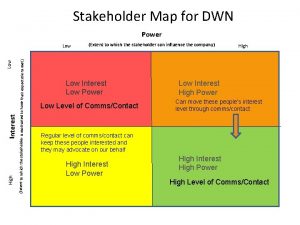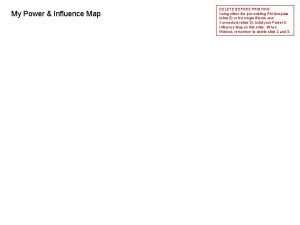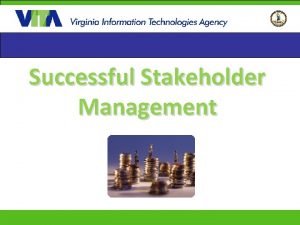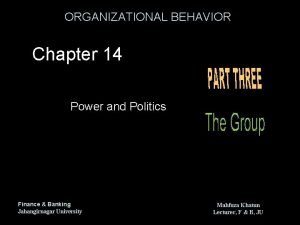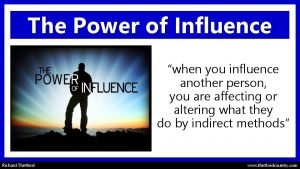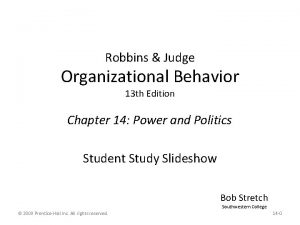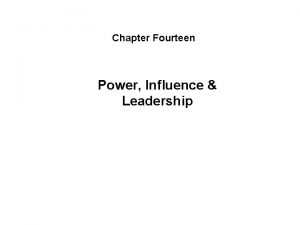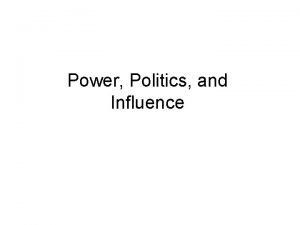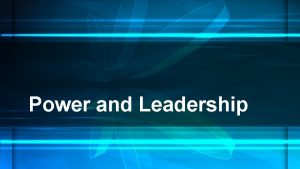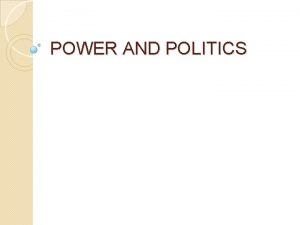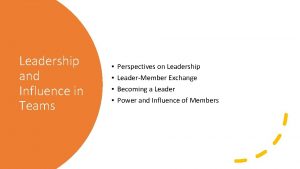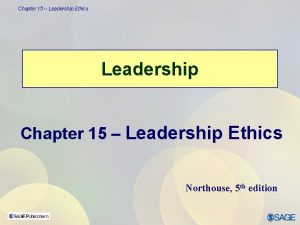Chapter 12 Leadership Power and Influence 1 Chapter











- Slides: 11

Chapter 12 Leadership Power and Influence 1

Chapter Objectives Recognize your natural leadership frame of reference and how you can expand your perspective. Use power and politics to help accomplish important organizational goals. Identify types and sources of power in organizations and know how to increase power through political activity. Use the influence tactics of rational persuasion, friendliness, reciprocity, developing allies, direct appeal, and scarcity. 2

4. Symbolic Ex. 12. 1 Four Leader Frames of Reference 3. Political Mind-set: Sees organization as 2. Human jungle, power, Resource schemes Mind-set: Sees Emphasis: organization as Resource family, belonging, allocation, clan negotiation, 1. Structural Emphasis: coalition building People, support, Mind-set: Sees Dangers: Power empowerment organization as plays for purpose Dangers: Lack of machine, of self-interest economics, plans content or Emphasis: Goals, substance systems, efficiency, formal authority Dangers: Rigidity and tyranny Mind-set: Sees organization as theater, spiritual meaning, dreams Emphasis: Vision, culture & values, inspiration Dangers: “Messiah” complex 3

Power and Influence Power The ability of one person or department in an organization to influence other people to bring about desired outcomes Influence The effect a person’s actions have on the attitudes, values, beliefs, or actions of others 4

Ex. 12. 2 Five Types of Leader Power • Legitimate • Reward • Coercive Position Power • Expert • Referent Personal Power 5

Ex. 12. 3 Responses to the Use of Power rop riat e app use ve Compliance Personal Power i ess exc use Position Power Resistance Commitment 6

Ex. 12. 4 Characteristics That Affect Dependency and Power in Organizations Leader has control over: Resources seen as unimportant Importance Resources seen as very important Widely available resources Scarcity Scarce resources Resources with acceptable substitutes Low dependency on leader = lower power Non substitutability Resources with no substitutes High dependency on leader = higher power 7

Ex. 12. 5 Strategic Contingencies that Affect Leader Power in Organizations Interdepartmental Dependency Control over Information Increased Power Organizational Centrality Coping with Uncertainty 8

Politics Activities to acquire, develop, and use power and other resources to obtain desired future outcomes when there is uncertainty or disagreement about choices 9

Ex. 12. 6 Seven Principles for Asserting Leader Influence 1. 2. 3. 4. 5. 6. 7. Use rational persuasion Make people like you Rely on the rule of reciprocity Develop allies Ask for what you want Remember the principle of scarcity Extend formal authority with expertise and credibility 10

Is the action consistent with the organization’s goals, rather than being self-motivated purely by selfinterest? Does the action respect the rights of individuals and groups affected by it? Does the action meet the standards of fairness and equity? Would you wish others to behave in the same way if the action affected you? Ethical Choice Ex. 12. 7 Guidelines for Ethical Action 11
 Ac power formula
Ac power formula Intellectual stimulation leadership examples
Intellectual stimulation leadership examples Stakeholder mapping template
Stakeholder mapping template Power and influence mapping
Power and influence mapping Influence map template
Influence map template Stakeholders matrix
Stakeholders matrix Power and influence in the workplace
Power and influence in the workplace Transactional leadership
Transactional leadership Sin redemption and damnation in dr faustus
Sin redemption and damnation in dr faustus Illegitimate political behavior
Illegitimate political behavior Power of influence
Power of influence Preferred power tactics by influence direction
Preferred power tactics by influence direction


